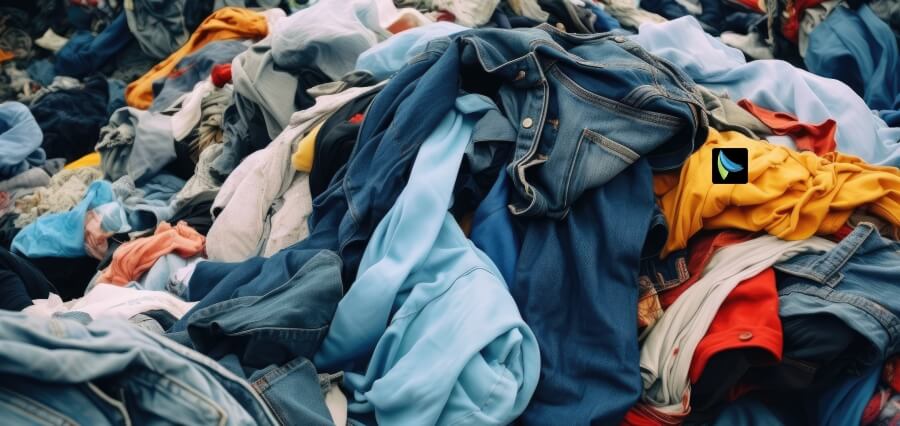In current era, affordable clothing is quite an irresistible piece of stuff. Fast fashion brands make fashionable items appear to be sold at unbelievably low prices. But behind those enticingly cheap price tags lie a complex web of environmental and social consequences often ignored or overlooked. The real cost of cheap clothes-the consequences of fast fashion on our planet and society-is explored in this article.
The Emergence of Fast Fashion
Fast fashion emerged in the latter end of the 20th century. It emerged as a response to the call by consumers to have affordable and fashionable clothing. Brands began producing in large volumes, hence easily and quickly respond to changes in fashions.
Such a model has led to an explosion in clothing consumption. However, research studies have shown that already, global clothing production has increased by more than double since 2000. What is most alarming, and notable is the fact that a person now buys 60% more clothes than they did 15 years ago, while only using each item for half as long.
Impact on the Environment
Fast fashion’s effects are alarming when considering its impact on the environment. The fashion industry alone contributes around 10% of total global carbon emissions, making it one of the largest polluters in the world. To further drive this point, 2,700 liters of water are needed to make just one single cotton t-shirt. The said quantity of water will enable one person drink water for two and a half years. Moreover, the production process quite often uses poisonous chemicals that end up contaminating the local water supplies.
Landfills are another serious matter. In the United States alone, approximately 11 million tons of textile waste end up in landfills every year. Most of these clothes are synthetic fibers, which take hundreds of years to decompose. In this respect, fast fashion not only produces waste but also depletes natural resources.
Social Ramifications
Just as shocking is the human cost of cheap clothes. In their bid to cut down costs as much as possible, most fast fashion manufacturers have opted to use mills located in developing countries where labor laws are either weak or seldom enforced. Workers working in such mills often endure poor working conditions characterized by overworking and very low wages. It has been claimed that garment workers are paid only $3 per day, and this is nowhere near enough to feed a family.
Tragedies such as building and factory collapses and fires have emerged to haunt the laborers. For example, in 2013, Rana Plaza building collapsed in Bangladesh, killing over 1,100 workers and injuring thousands. Such tragedies provide an urgent call for improved labor practices within the fashion industry.
Consumer Behavior
Though consumers realize fast fashion ills, reality dictates that nothing but the same trend of consumer behavior persists. Most consumers still prefer buying cheap and do not care much about the ethical implications it comes with. A survey reveals that close to 66% of consumers hold the opinion that they cannot afford sustainable clothing. This only gives way to the cycle to continue with fast fashion at the helm.
However, a great fact is that sustainability does not always guarantee high price tags. Thrift shopping and second-hand markets have become fashionable since they provide affordable alternatives that also support sustainability. Such trends reduce the environmental impact while still providing consumer access to fashionable clothing.
The Changing Tides of Sustainability
In response to mounting criticism, fast fashion companies have begun to make some strides in adopting more sustainable features. Examples include organic material use, lessened water intake in the manufacturing process, and improved labor conditions for workers in factories. This, though, does not come off as enough, and could be used more like a marketing ploy to convince consumers of positive change rather than an honest act of change.
Consumers are a key driver of this shift to sustainability. While demanding transparency and accountability from a brand, consumers prompt brands to make more responsible production practices. Spending on local industries and sustainable brands also impacts this trend.
The Role of Education
In turn, education can have a great impact on the attitude and behavior of consumers toward fast fashion. It would reach people to become conscious enough and get information about any kind of clothing production that is affecting the environment or human societies.
Then, it will make them able to make some responsible consumer decisions regarding their next purchases of clothes. Workshops and campaigns are organized by schools and community organizations that promote sustainability and ethical consumerism.
Besides that, social networks and online sites have become a power tool for the massification of more responsible fashion-related behavior. This way, influencers and activists are increasingly pointing out the need to make conscious choices regarding what one chooses to wear.
Conclusion
Low-cost clothing impacts in more ways than just monetary value-the environmental degradation and social injustices count in millions affected globally. On one hand, fast fashion presents apparel on someone’s doorstep and within arm’s reach; however, there are other costs associated with these facts that should not go unnoticed.
Making informed choices and contributing to sustainable practices helps contribute to the crafting of a more ethical fashion industry.
With every individual more and more aware of these issues, a layer of hope presses changes in the industry. A consumer’s collective power drives brands to strive further toward responsible practices, neither using people nor the planet for margin calls. This way, every single purchase made is able to be an opportunity to make a difference, changing the fashion landscape into one set upon sustainability and ethics rather than trends and low prices.


















